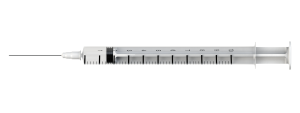
What size is that needle? Is it larger or smaller than the 20 gauge I have now? We all had that time when deciding what size we wanted was confusing. Is the larger number a larger size? Don’t some sizes get smaller with the larger number? Hopefully, by now you have figured it out. Generally, all you need to remember is that only needles get smaller with the larger size numbers.
Here is a quick review:
Larger Number = Larger Size: NG Tubes, Endotracheal Tubes, Foley Catheters.
Larger Number = Smaller Size: Needles, IV Catheters.
NG TUBES
Size is French Gauge (Fr). 1 Fr equals approximately 0.33 mm.
18 Fr X 0.33 mm = 6 mm size
e.g. | 5| 6 | 7 | 8 | 12 | 14 | and others.
FOLEY CATHETERS
Size is French Gauge (Fr). 1 Fr equals approximately 0.33 mm.
18 Fr X 0.33 mm = 6 mm size
e.g. | 10| 12 | 16 | 18 | 22 | 24 | and others.
ENDOTRACHEAL TUBES
Size is Internal Diameter (ID) in millimeters (mm)
3 ID = 3 mm size
e.g. | 2.5 | 3 | 4 | 7 | 8 | and others.
NEEDLES
Size (diameter) is Gauge (G). There are many different types of wire “gauge” standards, which determine the thickness (diameter) of a particular piece of wire, or needle size in the medical field. The Birmingham (aka Stub’s Iron Wire) gauge is used when manufacturing hypodermic / medical needles. Each standard differs in the size of a particular gauge.
e.g. | 18 G = 1.2 mm size | 20 G = 1.1 mm size| 23 G = 0.6 mm size | 25 G = 0.5 mm size| and others.
Why larger gauge sizes refer to smaller needles?: CLICK HERE FOR LINK TO ARTICLE EXPLAINING GAUGE